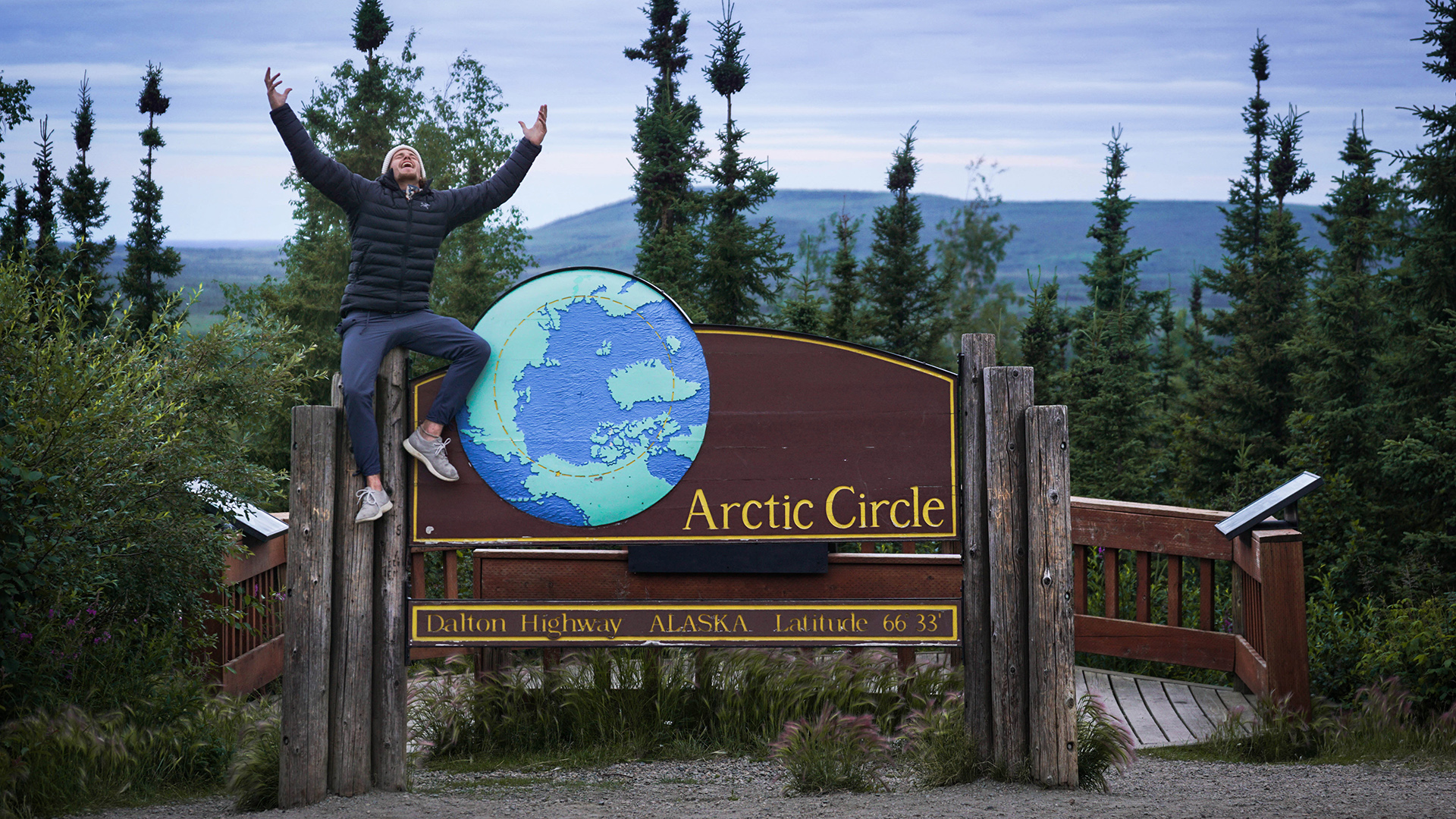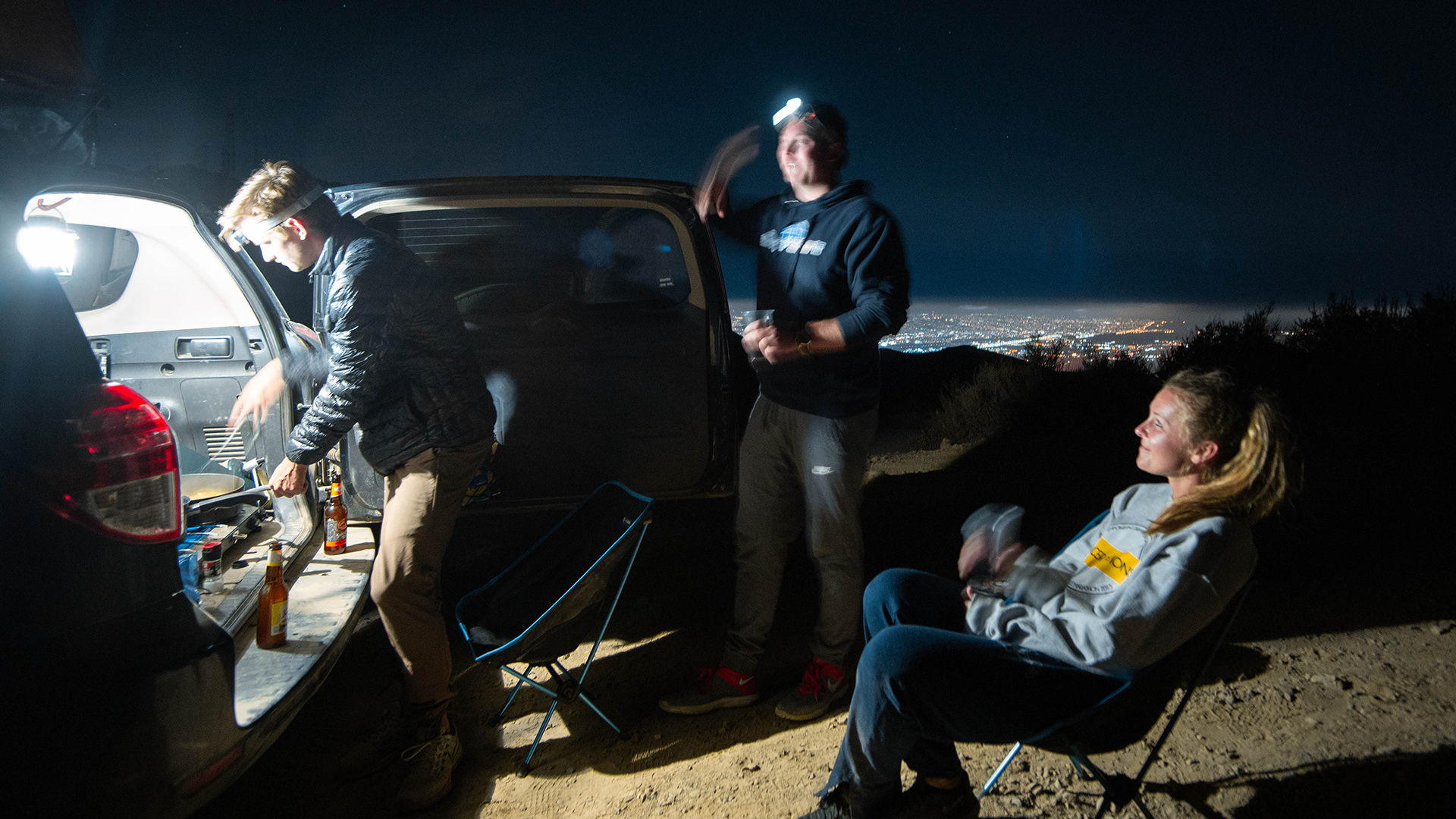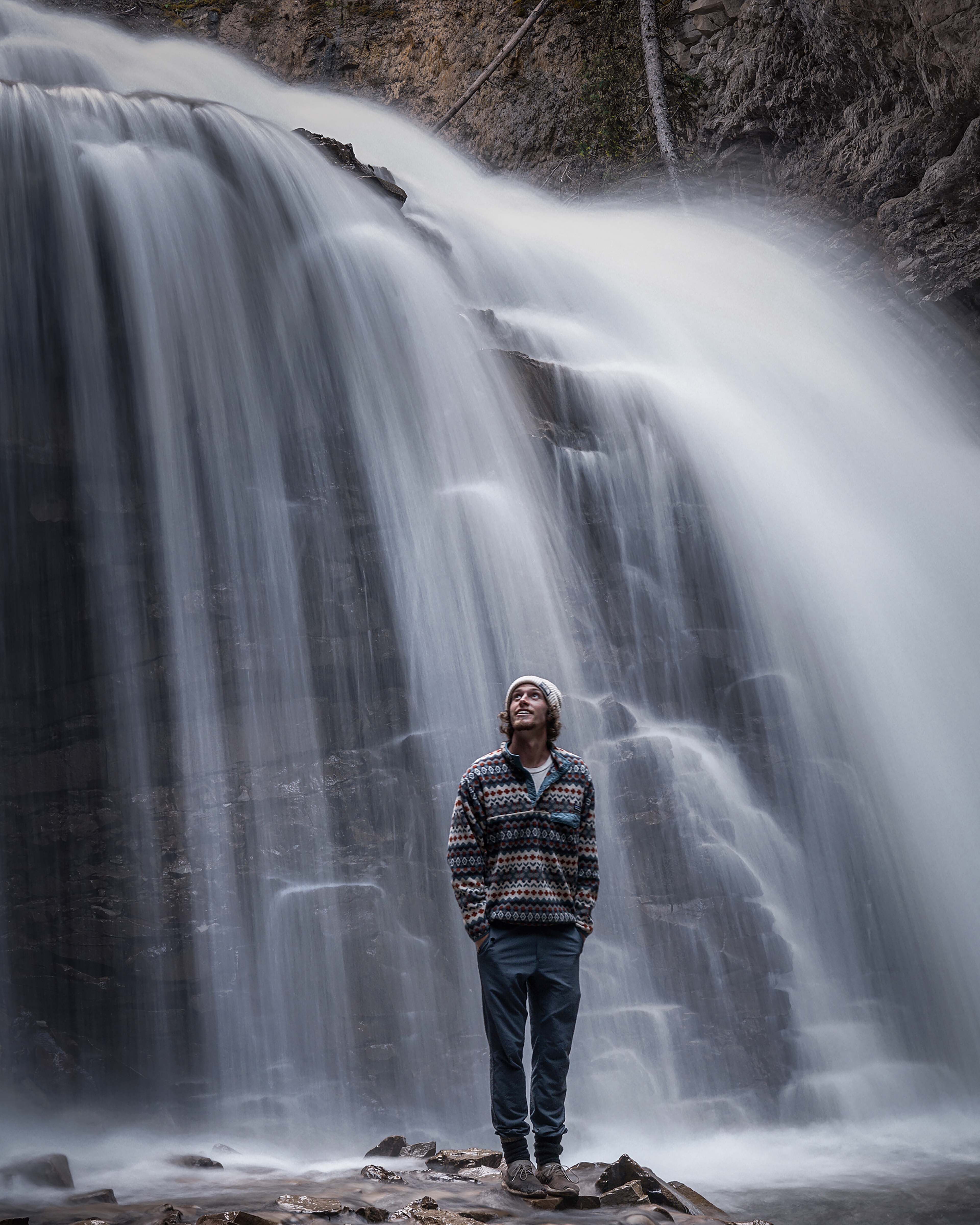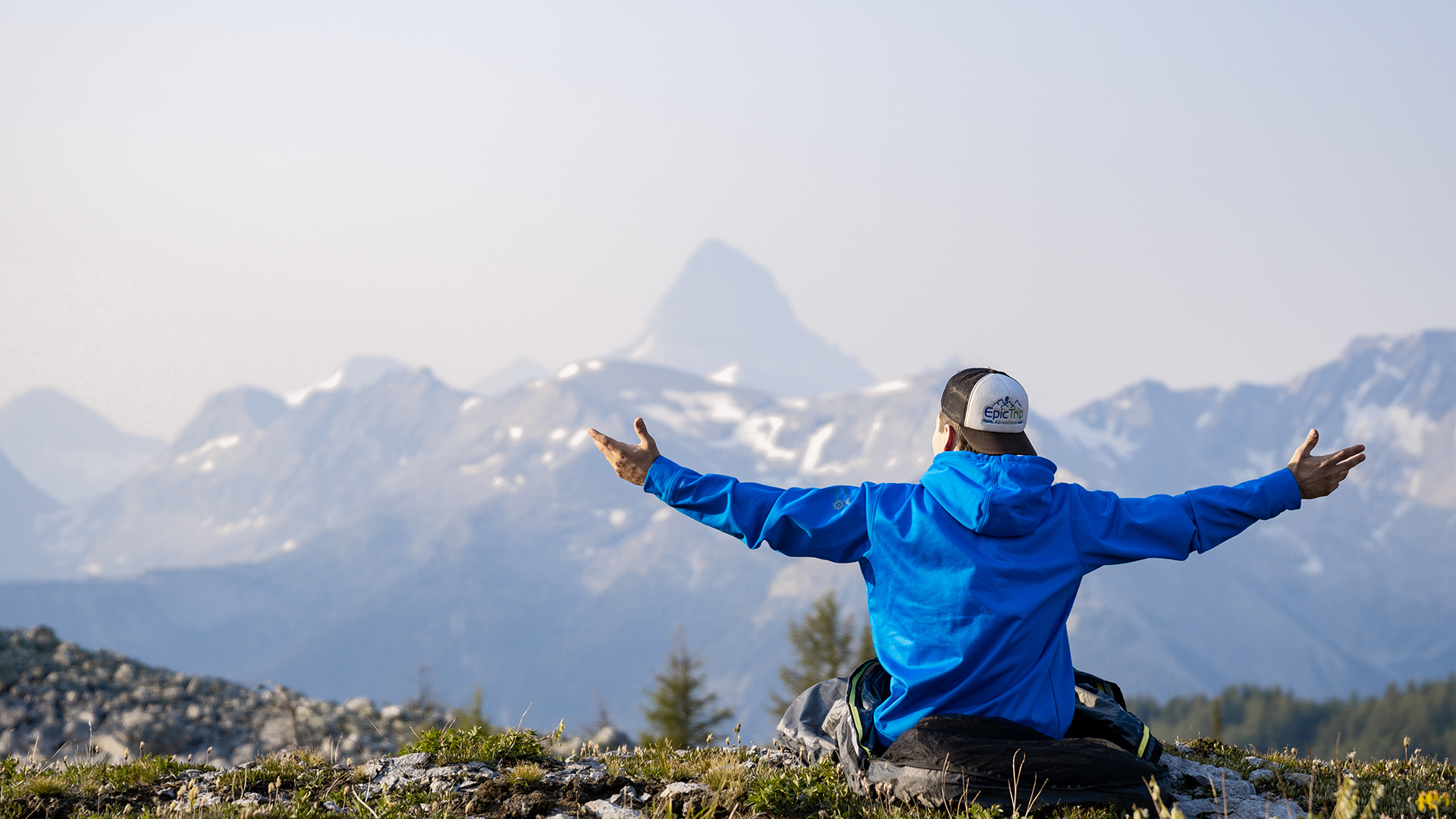Why do I like going to remote places?
Travel should be an adventure. It’s about challenging the unknown — pushing my comfort zone and seriously stretching those around me. I don’t understand why people go somewhere just to see it, snap a photo and leave.
For me it’s about sharing the experience, being able to teach others while learning together. Sure, I would have been able to achieve what I wanted to last summer alone. But, why wouldn’t I want to share it with old friends, new friends and strangers along the way. Trusting those who you have just met and continuing to spread the message of acceptance.
This was my summer of 2018 as I endeavored to travel through the Americas from Mexico to the Arctic Circle.
I made the 14-hour drive from Calgary to meet a friend and challenge ourselves at Grand Teton National Park. As we approached, the mountains emerged magnificently from the hazy skies created by the season’s forest fires. The Tetons towered over us, increasing in beauty and intimidation as we ventured closer.
Our goal was to summit The Grand Teton, a first for both of us. It would be, by far, the most challenging climb for my companion Bobby, who, unknown to me, had yet to make a technical ascent. We had two days to prepare. I started by taking Bobby through all of the basics of rappelling. Our rope was anchored off an old rickety sign post in the parking lot of a free campground we had found online. It also happened to be in the dark.
We spent the next day climbing with packs and familiarizing ourselves with the systems we would use on our alpine ascent.
At 10:30 p.m. we threw ourselves into the back of the car to snag as much sleep as we could. That’s when Bobby confessed he’d just chugged a bunch of caffeine. At 2:30 a.m. our alarms went off and we quickly hopped out of our bags, accidentally setting off the car alarm in a parking area surrounded by other slumbering mountaineers. We slung our packs on and quickly darted up the trail to avoid a confrontation. Bobby then admitted that his inflatable sleeping pad had popped the previous night and he had, in fact, gotten no sleep at all.
The good news was that we were deep into grizzly country and had to keep conversation rolling through the dark, to alert any bears we might encounter. That kept us both awake. Three and a half hours later, as we began the approach to the upper saddle of the Grand, we looked back to see vibrant display of morning light wash across the entire Middle Teton. Our exhaustion melted away. Two hours later we successfully topped out.

This is what adventuring is all about.
Travel means more than just seeing a space, it’s about experiencing the world on more than on just a superficial level. It’s about creating and solidifying relationships, and challenging our perspectives.
Over a year ago, a friend of mine showed me a quote by Mark Twain. It resonated with me strongly.
“Travel is fatal to prejudice, bigotry, and narrow-mindedness, and many of our people need it sorely on these accounts. Broad, wholesome, charitable views of men and things cannot be acquired by vegetating in one little corner of the earth all one’s lifetime,” Twain said.
This may seem harsh, but I would rather attempt to push myself in new ways than stagnate in a lack of willingness to experience others way of life.
This trip wasn’t just about persisting through physically grueling activities. It was about personal growth, while intellectually progressing and challenging my own perspective and that of those I know and met.
A trip to Mexico provided an opportunity for truly venturing into a different kind of unknown, one that I had yet to experience. This was going to be a true test of character and everything that I believed in. Crossing the border was either going to affirm all of the xenophobic and bigoted views of the general public about the relationship between the U.S. and Mexico, or it was going to provide a more humanistic social perspective of the south.
Leading up to this trip, everyone had an opinion on Mexico. Those who had been there seemed to love the people and the culture, those who hadn’t, possessed definite opinions and a strong fear of venturing beyond the border.
As the final U.S. exit faded in the rear view mirror, we approached the border and realized this was the point of no return. We were committed.
We drove along the border wall, and yes, there is one, to be greeted by Mexican border control. They took my Australian passport and gave it a quick glance. They never looked at Jordy’s, my Australian friend traveling with me for this portion of the trip. I was immediately shocked that none of the border guards spoke English. With my butchered Spanish that Google translate provided me with minutes before, I was able to navigate us through the most relaxed customs stop I’ve ever experienced, and I’ve been to some two dozen countries.
As we made the surreal transition from being in San Diego, one of the wealthiest cities in the United States with palm trees lining the streets, to Tijuana, a city with rudimentary roads and street life that’s so busy that it seemed chaotic at first, we asked ourselves, “Are we really here?”

It took us a while to venture from the familiarity of our car, but we needed money to start the day. Finally, I stepped out of the vehicle and walked directly to the bank.
It was closed.
I turned to a woman next to me at the door to the bank and managed to mumble out in Spanish, “Do you speak English?” Her response, “Aiiiiii noooooo!” We looked at each other and laughed, breaking the tension, before I thanked her and walked back to the car.
It was at this moment that all my uncertainty subsided. For the first time I could let my guard down and just take it all in.
Jordy and I spent the day in Tijuana, searching up the best places to eat while taking in all the sights. We stumbled upon the old city jailhouse. There are no prisoners inside. Upon entering we were swarmed by restaurant owners trying to guide us to their small eateries. We ate huevos rancheros with endless tortillas. It was the best meal we ever had, until we found street tacos later. Eventually we ended up at a smoothie shop where we watched the World Cup while waiting for our drinks.
I asked the shop owner where we should go down in Baja. His response lingered with me. “I don’t know, I work seven days a week to feed my kids.”
This made me think about how lucky I am, to be where I was, taking advantage of an opportunity that, in reality, a lot of people don’t have.
For the next five days we drove down Baja California, camping on beaches and experiencing the joy of little fishing villages, eating street food, meeting the locals and navigating military checkpoints operated by smiling soldiers.
Whilst I won’t shy away from the reality that Mexico has its struggles, much like other countries, I saw none of the apocalyptic vision as portrayed by politicians and media back in the States. I definitely benefited from keeping an open mind and challenging myself to construct my own realities, rather than following others.
Exploring new places
Mexico had a profound impact on me. I will return again.
Now it was time to embark towards the types of challenges that most of this trip was constructed around. Launching myself into the physical unknown.
Weavers Needle, a 1,000-foot tower of rock in the Arizona desert, provided just this kind of challenge.
It was 105 degrees and we were carrying 70-pound packs. We were nearly halfway there when I remembered I’d forgotten my damn drone battery. I urged my climbing partner, Brynn, to push on, while I began trail running the two miles back to the car. Thanks to a shortcut through the cactus-filled desert I returned 45 minutes later than planned, bloodied and suffering from heat exhaustion. I had managed to prick one of our 2 liter water bladders. I frantically started trying to chug the contents so that it wouldn’t all go to waste.
Taking only the essentials, of which half was hanging off our harnesses, we began the hike to the base of the rock wall. We were slowed on the first pitch, a 140-foot endeavor up unstable rock, because I had to scale it once to set the ropes, then a second time to bring up our shelter and food for the night. We were plunged into darkness as we reached the final pitch. Working by the light of our headlamps, we topped out and deliriously set up camp before being rewarded by smashing our dehydrated meal and clambering into bed.
A storm was approaching. I set an alarm every hour to monitor the weather. Just before midnight I woke to a blinding flash followed by an epic show of bolts that created an amphitheater of light. This was the moment we realized we were not in an ideal spot for a lightning storm, a thousand feet up in the middle of the desert with nothing else around. We were a prime target. The heavens opened and in the rain we ‘threw’ ourselves off the cliff, using an emergency rappel we had set earlier. As our feet hit the ground we jumped into our bivouacs, huddling in our clammy and damp dwelling for the next three hours as we got pummeled by marble-sized raindrops.
We woke at 5 a.m. to a cloudy morning that provided soft light to re-ascend the final pitch. As we pulled over the final lip and scrambled to the summit it hit us, just exactly where we were as we towered over the surrounding scenery. Literally on top of the world.

Not every experience has to be this profound. Sometimes the simple act of making it to a place is enough, expanding your own idea of what is possible.
My oldest friend from Australia, Frank, has started a tradition of popping over to join me on these adventures. It is now the third trip that he has been a part of. Starting in Vancouver after a drive up the West Coast we set out on absurd drive north to the Arctic Circle. A cruisy 2329 miles.
This would need to be achieved in one stint for us to be able to backpack Mount Sukakpak before Frank had to fly out.
For the next 44 hours we shared banter, music and most importantly the driving.
The easy part of sending it north was taking advantage of longer days and a midnight sun to keep us awake. This allowed us to never miss the mountains, or the plethora of wildlife darting across the road in what seemed like every five minutes.
The road north is part newly constructed highway and part dirt road (except it was worse than that — a combination of washboard and crater like potholes). The unpaved sections served as our alarm clock, providing a wakeup call as you were launched out of your seat on the ever undulating road.
I’d put in a 10-hour shift behind the wheel, and with my eyes growing heavy I asked Frank if he would take over as we entered the historic Dalton Highway, the last section of road that would take us to the Arctic Circle.
About two hours later I was awakened as my body was thrust upwards placing me close enough to the ceiling to smell the fabric. A dank smell from the hundreds of hours I had spent in the vehicle — sweaty, bloody and dirty.
“Settle down mate!” I exclaimed. Frank looked over with a dry smile as if he actually had been trying to eject me out of the car.
Enlarge

I checked the maps and we were only a few miles from being officially inside the Arctic Circle.
As we approached the boundary sign it was a symbolic moment. A realization that affirmed my original beliefs surrounding travel: It’s a lot easier than everyone thinks.
People make excuses. However, the simplicity of what we did was lurking in the background. To me, all that had happened was an idea manifested into a simple reality. Fill up my car and go.
No more excuses, no more reasoning why not to and no more focusing on the inevitability of mishaps was going to stop me.
And with that, I did it.
The Bus
At University Park, Sam Reiser is known as the man making a rolling home out of a 2001 International school bus. You can follow Reiser’s adventures on his website or Instagram (@bus.roaming).